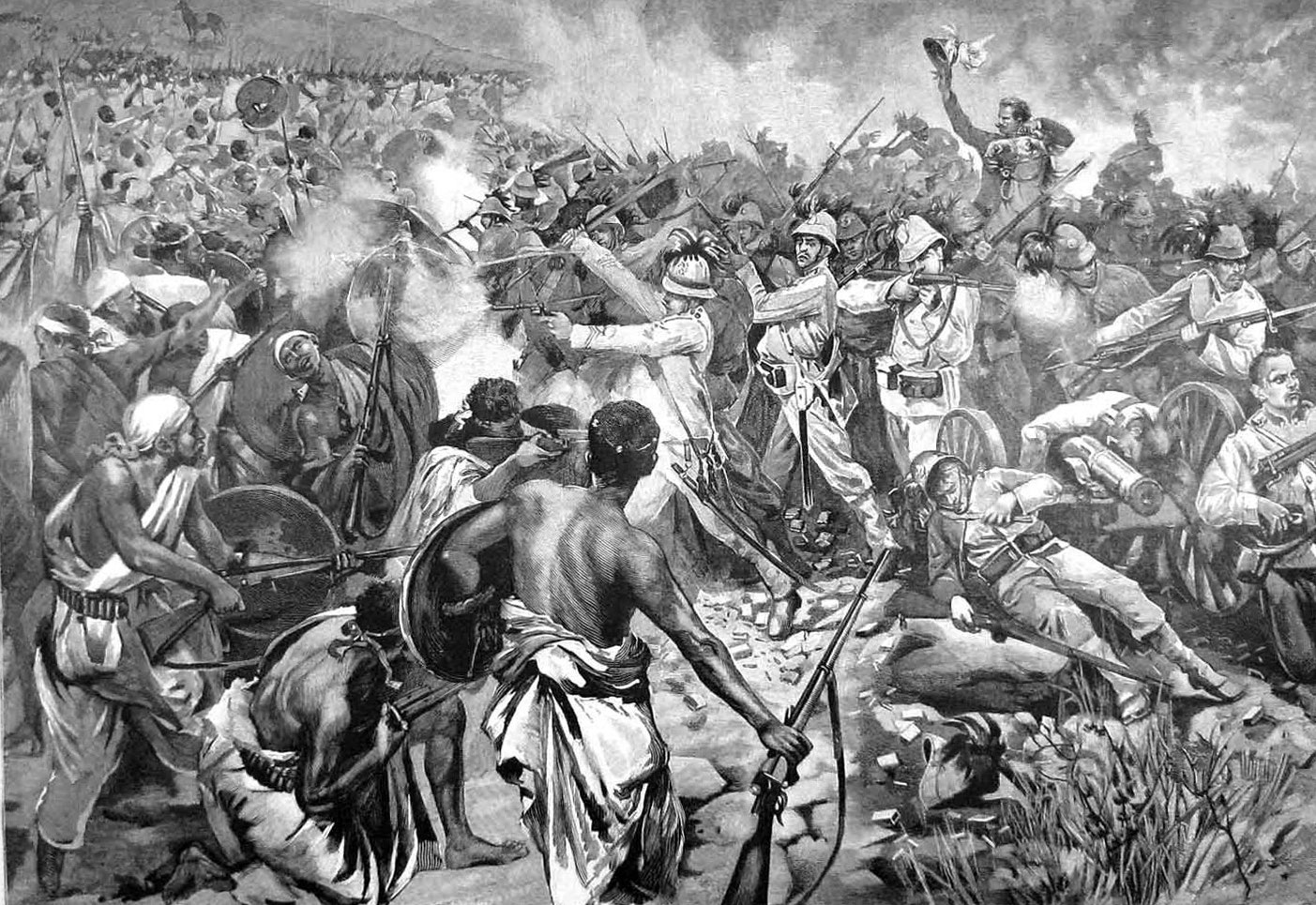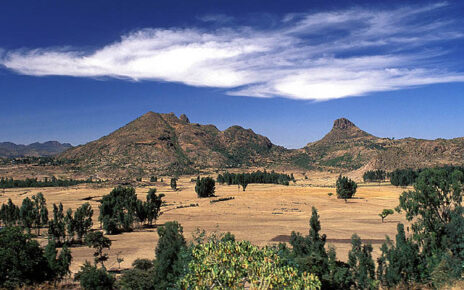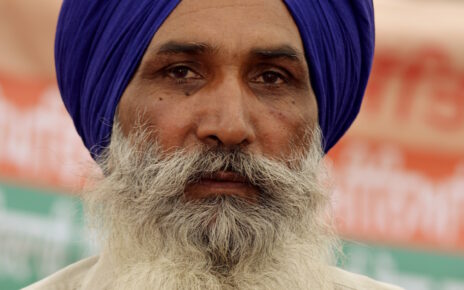The following is the first installment of a two-part series.
White-Painted Ethiopia Bodies
In 1896 Ethiopians defeated the Italian military and defended their border. That made Ethiopia the only black nation that defended its border in the era of colonization.[1] However, protecting their land/border was not enough for Ethiopians to be a free nation. Their bodies and souls became abused and colonized by the Western discourses. In his book, Black Skin, White Masks, Frantz Fanon employs the psychoanalytical method to show the colonized mentality of the black man in which he becomes alienated from his cultural and social identity. Fanon wants to address both the inferiority complex of the black man and the superiority complex of the white man. The inferiority complex of the black man comes from the superiority complex of the white man that wants to create only the world of white men. Fanon writes,
The black man wants to be white. The white man is desperately trying to achieve the rank of man. This essay will attempt to understand the Black-White relationship. The white man is locked in his whiteness. The black man in his blackness.[2]
Fanon exposes this created identity through his psychoanalytical method. If the white man eliminates the world of a black man, the only destiny that the black man has is whiteness.[3] The 1896 Adwa victory, however, shows that the black man has the power to defend his culture, identity, and language. Fanon’s psychological analysis cannot address the ideological, discourse, and image colonization of Ethiopians. Fanon cannot describe this kind of colonization Ethiopians because he is describing the people who are struggling due to land and cultural colonization. However, Ethiopians’ colonization is not only psychological but also metaphorical and ideological.
In his article, “The Anomaly and Paradox of Africa,” Tesehale Tibebu argues that even though Ethiopians as a black nation were able to defend their border, their victory was not accepted as a black nation’s victory. Western discourses painted Ethiopian bodies white and de-Africanized them. Instead of being part of the black nations, Ethiopia became an exception. The major image that the Western discourses employed to separate Ethiopia from the rest of Africa was “isolation image”. The Plateau geography of Ethiopia was presented as a country that cannot be accessed by other African nations and the rest of the world.
However, the truth is that the Italians, the British, and the Sudanese Mahdists contested the Ethiopian border and tried to colonize it. Similarly, the isolation discourse of the West stresses Ethiopians’ Coptic/Monophyte faith tradition, and its connection to the Hebrew Bible and Roman civilization. However, they neglected to show that Ethiopian’s Coptic Christianity was part of the Egyptian Coptic church.[4]
The romantic image was another image that the Western writers employed to show the beauty of Ethiopians, in particular, the Amhara. Amhara is a Semitic ethnic group, and they were Ethiopian elites for the centuries. Ethiopians were praised by the Western discourses for their olive skin color, beautiful body structure, and facial expression. The romantic image presented Ethiopians as distinct and different from the rest of Africa.[5] Everyone wants to look beautiful, but the romantic image was not a compliment; instead, it was imagery and body colonization that makes Ethiopians feel white and superior by obscuring their blackness.
The “Adwa complex image” is one of the known Western discourses that painted Ethiopians bodies white. As Fanon argues, a White man’s superiority complex cannot accept its defeat by a black man, because the black man is “a pure replica of the white man.”[6] The superiority complex wants to have a world that is free from black men, so it rejects the Adwa victory by painting Ethiopian bodies white. Tibebu writes:
A new image of Ethiopia and Ethiopianism, an image in tune with the western racist imperialism of the times, had to be worked out. The easiest way to do so was to paint Ethiopians white.[7]
This image of Haile Selassie I represents the white-painted bodies of Ethiopians. After the Adwa victory, Ethiopian military power and Menelik II were presented as Caucasian and military power. Fanon argues that due to the inferiority complex, the black man alienated himself from his own identity and borrowed the mask of whiteness to live in the white world. Even though the black man and woman can defend their border as in Ethiopia, the superiority complex of the white man cannot accept it. The Adwa war is a victory of black men and women.
Even though Fanon failed to talk about black women, the Empress Taitu and most Ethiopian women were the support of the Ethiopian army that has defeated the white military power.[8] Western discourse cannot accept Ethiopians’ identity as African and black, so Westerners isolate and paint Ethiopian bodies white so that their white superiority cannot be penetrated and defeated by black bodies. Ethiopians need to decolonize white-painted, isolated, and romanticized images by using the Adwa victory as a praxis not only to remember the past but also to disrupt the ideological and metaphorical colonization that disconnects them from their cultural and social location.
Gendered Ethiopian Bodies
“The Adwa Complex Image” made Ethiopians not only white but also white-male. However, in 1936, when the Italian war occupied Ethiopia, Western images of the white-painted bodies of Ethiopians changed to a barbarian and uncivilized status.[9] Fanon claimed that the lived experience of the black man resisted the inferiority complex that was imposed by the white man. However, the lived experiences of the black man are not valid in the world of whiteness. The black man has triple identities: black body, white soul/mask, and the Other.[10] Even though Fanon calls for an end to this alienation by creating psychological awareness, he does not show how black bodies are gendered and racialized due to their relation to whiteness. The victory of Adwa or the lived realities and experiences of Ethiopians cannot determine their identity because their bodies are not only alienated but also gendered and racialized by the power of whiteness.
Brian Yates employs the Lewis Gordon’s presence/phallus and absence/hole images to show how colonization works in the Ethiopian context. According to Gordon, the phallus image represent presence, white and civilized bodies. The hole image represents absence, black, female, and uncivilized bodies. Gordon integrates Fanon’s and Jean-Paul Sartre’s theories to analyze the racial and gendered bodies of colonized nations.[11] As Fanon argues, the superiority complex of white man wants to have a world free from black men, and that creates the inferiority complex and alienation of the black man. According to Gordon, bodies with phallus are white, and the rest are holes, so black men are not only inferior but also absent/ female bodies. When Ethiopians were able to defend and protect their border, culture, and identity, they become male/phallus. Yates writes,
Ethiopia, alone on the African continent, stopped this spread by defeating the Italian at Adwa. It was seemingly a victory of a Black female body over a white male body, which was an impossibility during the late 19th century. [12]
The emperor of Ethiopia Menelik II was presented as Caucasian/ white male because only a white-male can defeat a white-male. Based on this definition, Ethiopians are not female or absent, because they were able to defend their border. On the other hand, even though the European discourses presented Menelik as Caucasian, still, he was not a phallus because defeating is not enough, he should penetrate other bodies.[13] Yes, Menelik II is a Black man and Ethiopians are Africans, and they were able to protect their border, culture, and identity, but were they able to understand the ideological and discourse colonization that gendered and racialized their bodies?
After the death of Menelik II, Haile Selassie I came to power. In his era, Ethiopia became a member of the League of Nation and started the Pan-African movement among diaspora Africans. That gave Ethiopia a black identity that could represent other black nations. Menelik II was able to protect against European penetration. Haile Selassie I started to penetrate other bodies, and he became a phallus. Haile Selassie was equal to the level of a white male who can defend and at the same time penetrate other bodies. Yates writes, “His image was a world image that displayed to the world that one could be Black, Independent, and Christian.”[14] However, male/phallus images of Ethiopians and Haile Selassie I did not stay for very long— the Italian Fascists occupied Ethiopia from 1935-1939.
Even though both nations were the member of the League of Nations, Italy transgressed the covenant and occupied Ethiopia. According to Yates, the propaganda that was transmitted about Ethiopia’s uncivilized social and economic status initiated the second Italian occupation. In 1930, most European countries’ representatives came to Ethiopia to attend the coronation ceremony of Haile Selassie I, and they evaluated Ethiopian civilization and development through their gaze and categories. So, from 1930-1936, there was propaganda about the need to civilize Ethiopia.[15]
Menelik II was able to defend his border, and Haile Selassie I was able to penetrate other bodies due to his capacity in national relation and pan-Africanism. Still, Ethiopians were not fully presence/ phallus because, according to the European categorization, they were uncivilized and undeveloped. Due to this propaganda, Fascist Italy occupied Ethiopia; when Italy occupied Ethiopia, Italians were identified as white. On the other hand, Ethiopians went back to their Barbarian, black, and uncivilized bodies.[16] The female gendered bodies of Ethiopians were connected to civil war, famine, poverty, and at-risk and impoverished children.
One of the best-known images that represents Ethiopia after the Italian occupation was the 1980s famine. Alemayehu Erkihun Engda, in his article, “Ethiopia in the Image of the West in the 1980s” argues that the western media played the major role in creating fixed-famine images of Ethiopians. In the 1980s some parts of Ethiopia suffered due to famine and drought, but the Ethiopian communist regime was not willing to ask for help from the West. However, BBC journalist Mohammed Amin’s documentary film showed the terrifying suffering of unnourished children and breastfeeding mothers to the world.
At the same time, David Baily displayed a photographic collection of the victims of the famine for public exhibit. The exhibition, documentaries, and media prompted many humanitarian organizations to come to Ethiopia and support the famine victims.[17] However, the Western media, instead of presenting the famine as an incident, presented Ethiopian women’s and children’s bodies as the description and symbol of poverty and famine. “[T]he Encyclopedia Britannica and Oxford English Dictionary referred Ethiopia to illustrate famine.” [18] The famine’s images, exhibitions, and movies demonstrate that Ethiopian bodies are female and absent. At the same time, they are uncivilized and undeveloped nation who cannot feed their children. The Western discourses and media sustain the undeveloped and uncivilized images of Ethiopians until today.
Rode Shewaye Molla is a Ph.D. candidate in the University of Denver and the Iliff School of Theology Joint Doctoral Program (JDP) in the Study of Religion. Rode is originally from Ethiopia. Rode’s research and writing focuses on decolonizing oppressive practices, images, and embodied normative rules and ideologies through an interdisciplinary methodology that at the intersection of postcolonial theory, political and public theologies, intercultural care, borderland, and embodied religious practices.
______________________________________________________________________________
[1] Raymond Jonas, Adwa Victory: African Victory in the Age of Empire (Cambridge, MA: Harvard University Press, 2011), 1-3.
[2] Frantz Fanon, Black Skin White Masks, Trans. Richard Philcox (New York: Grove,1967), Location 102.
[4] Teshale Tibebu, “Ethiopia: The “Anomaly” and “Paradox” of Africa,” Journal of Black Studies Vol. 26, No. 4 (March 1996): 414-419, Stable URL: http://www.jstor.org/stable/2784716, accessed: 29-01-2018 17:37 UTC.
[5] Ibid., 419-20.
[6] Fanon, 19.
[7] Tibebu, 419.
[8]Jonas, Adwa Victory: African Victory in the Age of Empire, 112-113.
[9] Brian J. Yates, “From White Males to Black Females: Understanding the National Bodies of Ethiopia (1896—1936),” Journal of Black Studies Volume 44, No. 1 (JANUARY 2013), 93-95,
URL: http://www.jstor.org/stable/23414705, Accessed: 29-01-2018 22:47 UTC 83.
[10] Fanon, Black Skin, Whit Masks, 90-95
[11] Yates, 81-100.
[12] Ibid., 83.
[13] Ibid., 84-86.
[14] Ibid., 89.
[15] Ibid., 88-95.
[16] Ibid.
[17]Alemayehu Erkihun Engida, “Ethiopia in the Image of the West in the 1980s,” International Journal of History and Cultural Studies (IJHCS) Volume 3, Issue 4 (2017): 11-13, https://www.arcjournals.org/pdfs/ijhcs/v3-i4/1.pdf
[18] Ibid., 15.




